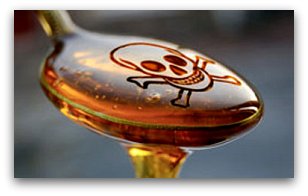 The sale and consumption of raw, unpasteurised milk remains controversial. It is illegal here in the UK and in many European countries. However, it has been legalised in over 40 states in the US. There has been an effort to introduce two federal bills aimed at relaxing the regulations that are associated with this product. Raw milk advocates tout its health benefits, while many in the public health and traditional dairy industry claim it is unsafe. So what is the basis for these claims and why the debate?
The sale and consumption of raw, unpasteurised milk remains controversial. It is illegal here in the UK and in many European countries. However, it has been legalised in over 40 states in the US. There has been an effort to introduce two federal bills aimed at relaxing the regulations that are associated with this product. Raw milk advocates tout its health benefits, while many in the public health and traditional dairy industry claim it is unsafe. So what is the basis for these claims and why the debate?The FDA boldly prints warnings that raw, unpasteurised milk can carry dangerous bacteria. But supporters of the drink call it real milk and swear by its incredible health benefits. It may well be that the most popular form of milk in the US being UHT (ultra high treatment) and homogonised radically alters the taste of milk and pasteurised milk is difficult to source. Could it be that raw milk with its vastly distinct flavour to UHT is so nice that many disregard its risks for the sake of taste? Many claim that raw milk is 'lifesaving' with numerous health benefits, calling it 'real milk' because it comes from pastured animals and is unprocessed and full fat, she said it promotes overall health. European studies have shown that raw milk also protects against asthma, allergies, and eczema, and it is beneficial to babies, instead of formula, if mothers cannot produce enough breast milk. But not everyone is convinced about raw milk’s benefits. The Food and Drug Administration (FDA), Centers for Disease Control and Prevention (CDC), many public health officials, and the dairy industry say raw milk is unsafe.
According to the FDA, raw milk contains numerous illness-causing pathogens, including E. coli, listeria, and salmonella, which they say are killed by pasteurisation. The FDA states that raw milk is particularly dangerous for babies, young children, the elderly, and people with weakened immune systems. Not to mention brucellosis, a bacterial infection that spreads from animals to people — most often via unpasteurised milk, cheese and other dairy products. More rarely, the bacteria that cause brucellosis can spread through the air or through direct contact with infected animals.
Brucellosis symptoms may include fever, joint pain and fatigue. The infection can usually be treated successfully with antibiotics. Treatment takes several weeks to months, however, and relapses are common. The disease affects hundreds of thousands of people and animals worldwide and avoiding unpasteurised dairy products and taking precautions when working with animals or in a laboratory can help prevent brucellosis.
Raw milk is inherently dangerous, no matter how it is sold. Even those states which allow raw milk sales typically will warn consumers that, even while raw milk is regulated and allowed to be sold, it is still dangerous.Based on CDC data, the FDA reports that from 1987 to 2010, raw milk caused more than 2,600 illnesses and three deaths. However, some argue that the rate of illness related to other raw foods, such as oysters and lettuce, and pasteurised dairy products is much higher than that of raw milk products.
Since 2007, when his organisation began tracking raw milk statistics, there have been three deaths attributed to pasteurised milk, five related to pasteurised cheese, and none based on raw milk or cheese. To cite CDC statistics, more than 10 million raw milk drinkers in the US, there are about 50 reported illnesses each year. Aside from the health benefits of raw milk, advocates say consumers should be allowed to make their own decisions about which products they purchase and consume.
 Public health officials largely have not recognised the health benefits of raw milk, and the dairy industry is in fact afraid of raw milk because raw milk farmers are paid more per gallon for their products than traditional dairy farmers. The International Dairy Foods Association and the National Milk Producers Federation recently announced their opposition to two federal bills to relax raw milk regulations.
Public health officials largely have not recognised the health benefits of raw milk, and the dairy industry is in fact afraid of raw milk because raw milk farmers are paid more per gallon for their products than traditional dairy farmers. The International Dairy Foods Association and the National Milk Producers Federation recently announced their opposition to two federal bills to relax raw milk regulations.Interestingly, a number of states require warning labels on raw milk, but the FDA does not require labels. The agency states that labels do not sufficiently protect consumers, because label information may not be understood by those most susceptible to illness from raw milk. Consumers can evaluate the safety of their raw milk by visiting dairy farms and asking if farmers regularly test milk for somatic cell count, standard plate count, and coliform levels. Ultimately, consumers have the right to make their own decisions about raw milk and like any other food, if an illness occurs, consumers have recourse from anyone in the distribution chain, including farmers and retail outlets.
Here are some of the pros and cons of consuming raw milk:
CON: Unpasteurised milk can carry bacteria such as Salmonella, E. coli and Listeria.
According to the FDA, raw, unpasteurised milk can carry dangerous bacteria which are responsible for causing many foodborne illnesses. While supporters of raw milk cite that this is incredibly rare, that doesn't negate the fact that you can become very ill from bad bacteria in raw milk. It's the reason pasteurization was invented. The process of heating milk above 161 degrees helped curb such illnesses as Tuberculosis.
PRO: Raw milk proponents claim it tastes better.
Because raw milk has not been heated or homogenised and often comes from pasture raised animals, it tends to be sweeter and richer. Some of the country's best chefs swear by its flavour superiority.
PRO: Raw milk contains no additives.
Raw milk is milk that comes straight from the udder and is then directly cooled and bottled. Since raw milk hasn't been processed it has nothing in it but the milk that was taken from the cow. For food purists, this is a major plus.
CON: Raw milk is especially dangerous to people with weakened immune systems.
According to the FDA, raw milk is especially risky for older adults, pregnant women and children. There have been documented cases where children who were given raw milk as a healthier dairy option ended up extremely ill.
PRO: Raw milk is responsible for some pretty amazing cheeses.
Raw milk contributes to the flavor of some of our favorite cheeses. The raw milk imparts unique characteristics of the land in which the cheese is made, giving it a distinctive terrior.
CON: There is no strong scientific evidence that raw milk is healthier, so why risk it?
While many raw milk enthusiasts cite studies that claim raw milk can help prevent asthma, lactose intolerance and allergies, those who are against raw milk consumption point out that these studies have been small and inconclusive.
For more information visit: http://www.fda.gov/Food/ResourcesForYou/consumers/ucm079516.htm
or http://www.cdc.gov/foodsafety/rawmilk/raw-milk-index.html











